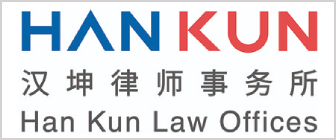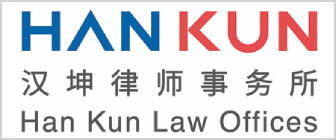ESG is in high alignment with China’s “dual carbon” goals and has become an important indicator for measuring the sustainable and high-quality development of enterprises in China. Adopting a top-down approach, the Chinese central government has codified the importance of green and sustainable development in policy papers and Five-Year Plans. Financial institutions, in particular commercial banks, play a pivotal role in mobilizing resources, and their allocation in green activities and projects can help to accelerate the nation’s green economy transformation and support the development of ecological civilization.
Accordingly, China market has seen various ESG banking products including green deposits, green credit, green bonds and green derivatives, along with the development of unified standards and information disclosure systems. This article is the first of our series of ESG banking products in China, discussing the issues surrounding the design, issuance, and management of green deposits.
Key features of green deposits
While not defined under the PRC laws, “green deposits” are generally characterized as interest-bearing deposits and the proceeds of which are allocated towards environmentally sustainable initiatives or projects, such as environmental protection, low-carbon economy, climate change mitigation and sustainable development (“Eligible Green Projects”).
In the absence of mandatory PRC law requirements, it is widely acknowledged by market participants and regulators that the Guiding Catalogue of Green Industries (Edition 2019) (the “Green Industry Catalogue”)1, the Green Bond Principles2 and the Catalogue of Projects Supported by Green Bonds (the “Green Bonds Catalogue”) issued by the People’s Bank of China, the National Development and Reform Commission and the China Securities Regulatory Commission with effect from 1 July 2021 are the principal guidelines for the selection of Eligible Green Projects. Both the Green Industry Catalogue and Green Bonds Catalogue list out 6 green industries, and the explanatory notes to the Green Industry Catalogue further specify the scope of activities covered by each industry, the descriptions and applicable industrial standards in respect of the relevant activities, so as to facilitate the identification of green projects by banks.
| Industry | Eligible Green Projects |
| Energy conservation and environmental protection | Efficient lighting products and system manufacturing, manufacturing of equipment for water pollution prevention and control, manufacturing of equipment for comprehensive utilization of industrial solid waste, manufacturing and industrialization of key components for new energy vehicles, green lighting renovation, rural living environment improvement, comprehensive utilization of urban and rural household waste, etc. |
| Clean production | Efficient transformation of industrial park resource utilization, hazardous waste treatment and disposal, ultra-low emission transformation of coal-fired power plants, water-saving in production processes and efficient utilization of water resources, recycling and treatment of packaging waste, etc. |
| Clean energy | Manufacturing of wind power or solar power equipment, construction and operation of wind power facilities, construction and operation of solar energy utilization facilities, clean coal production, construction and operation of smart grids, etc. |
| Ecological environment | Green organic agriculture, green animal husbandry, construction and operation of nature reserves, ecological restoration of mining areas, conversion of farmland/pasture to forest and grassland project construction, etc. |
| Green innovation of infrastructure | Construction of ultra-low energy consumption buildings, construction and operation of urban and rural public transportation systems, construction and operation of household waste treatment facilities, construction and operation of sponge-type buildings and neighborhoods, construction and maintenance management of road greening, etc. |
| Green services | Design services for green industry project proposals, carbon emissions trading services, environmental impact assessment, pollution source monitoring, certification and promotion of energy-saving products/green food/green building materials, etc. |
Typical green deposits include time deposits, certificate of deposits and call deposits. The net proceeds in the deposits accounts will be used to finance or refinance the Eligible Green Projects in the green financing pool. The projects in the green financing pool will be reviewed by the banks periodically in accordance with the internal green deposit policies and an existing project may be replaced if it does not satisfy as an Eligible Green Project.
In market, both Chinese funded banks and foreign funded banks in China have been actively involved in the issuance of green deposits in recent years.
Management of green deposits
I. Selection of Eligible Green Projects
Banks shall, on the one hand, formulate the ESG goals and internal policies regarding the standards and eligibility criteria to select Eligible Green Projects based on the Green Industry Catalogue and the Green Bonds Catalogue. On the other hand, some banks will also prepare a list of prohibited projects to exclude certain activities such as those involving the consumption of fossil fuels, and direct waste incineration. The International Financial Corporation of World Bank Group has promulgated an exclusion list which may serve as a reference3.
For common terms, such as currencies, interest rate, minimum deposit amount, and the other terms and conditions, the banks’ existing policies for deposits may still apply. One or more deposits will be linked to one or more Eligible Green Projects, and usually the maturity date of the green deposits shall be earlier than the last repayment date of the outstanding loans in respect of the corresponding Eligible Green Projects to ensure that they will be solely used to finance/refinance the specific Eligible Green Projects.
In addition to imposing the criteria on projects from an industry perspective, banks may also review the creditworthiness of the borrower applying for the green financing under an Eligible Green Project, including its credit ratings, track record for performance of repaying debt and notably, any penalties incurred for breaching environmental protection laws or having any material social or environmental risks.
Separately, some banks may challenge the eligibility of the refinancing of existing Eligible Green Projects as there appears to be no new assets or generation of new “green” impact. However, the Green Bond Principles allow refinancing for Eligible Green Projects but it is recommended that disclosures shall be made as early as possible for refinancing activities and the expected look-back period for the refinanced Eligible Green Projects shall be included for disclosure.
II. Product management
1. Continuing monitoring and timely disclosure
Banks shall properly record the allocation of deposit proceeds and ascertain that they are used to finance and/or refinance the Eligible Green Projects. The size of the financing pool shall be controlled to the extent it does not exceed the size of the pool of the corresponding deposit proceeds. External auditors can be introduced during the process to verify the banks’ methods of project selection and allocation of funds. As most of the underlying projects are loan transactions which are subject to confidentiality obligations, the Green Bond Principles recommend that information is presented in generic terms or on an aggregate portfolio basis (e.g., the percentage allocated to certain project categories).
In addition, banks may also conduct follow-up assessment on the social and environmental impact generated after the proceeds are utilized from time to time. In case there is any negative impact, banks may timely adjust the scope of the Eligible Green Project or reconsider/amend the selection criteria.
2. Report
It is not uncommon for banks to record, keep and update the information of the use of proceeds for each green deposit, as well as any material changes in Eligible Green Project or the prescribed selection criteria, until the proceeds are fully utilized. Due to transparency considerations, banks may also include the relevant date regarding the issuance of green deposits and use of proceeds in their annual reports or any specialized ESG reports, or even their official websites.
3. Monitoring of regulatory risks
Similar to the cash management on the other financial products, banks shall pay attention to money laundering and sanctions risks associated with the funds transfer and duly fulfill the relevant obligations, including KYC checks, screening of anti-money laundering watch lists, preservation of customer identity and transaction information, and reporting of large and suspicious transactions.
III. Third-party assurance
The issuance of green deposits shall be subject to an independent third-party verification/assurance to verify that the proceeds are allocated to Eligible Green Projects and aligned with the banks’ ESG goals. A third-party verification/assurance report usually covers the following:
- the proceeds raised through the issuance of green deposits are ultimately used for Eligible Green Projects; and
- evaluation of the internal policies and control measures with respect to the selection, management and evaluation of Eligible Green Projects.
Green deposits by nature are deposits with a “green” label and attached with a couple of additional conditions imposed on use of proceeds raised through deposit products. It enables banks to expand their customer base, facilitate the mobility of capital, and demonstrate the commitment towards environmental protection and sustainable development. While we have seen a growing number of green deposits issued, it is imperative for banks to establish effective internal policies to ensure the accomplishment of ESG goals and avoid “green wash” concerns.
Important Announcement
This Legal Commentary has been prepared for clients and professional associates of Han Kun Law Offices. Whilst every effort has been made to ensure accuracy, no responsibility can be accepted for errors and omissions, however caused. The information contained in this publication should not be relied on as legal advice and should not be regarded as a substitute for detailed advice in individual cases.
If you have any questions regarding this publication, please contact:
Ting ZHENG
Tel: +86 21 6080 0203
Email: ting.zheng@hankunlaw.com
Raymond YAN
Tel: +86 21 6080 0512
Email: raymond.yan@hankunlaw.com
1 Issued by seven ministries and commissions on 14 February 2019, including the People’s Bank of China. The 2023version of the Guiding Catalog of Green Industries was issued for public comments till 15 April 2023 and has not comeinto effect yet.
2 Issued by the International Capital Market Association. The Green Bond Principles were first published in 2014 with thelatest update in June 2022. Please see the latest version at https://www.icmagroup.org/assets/documents/Sustainablefinance/2022-updates/Green-Bond-Principles-June-2022-060623.pdf.
3 Please find the exclusion list in full at: https://www.ifc.org/content/dam/ifc/doc/mgrt pub/ifc exclusion list.pdf



